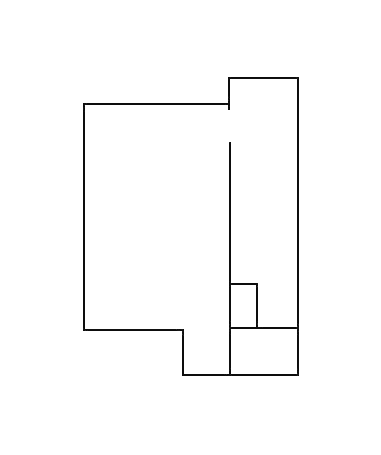Through A Window, Down A Portal
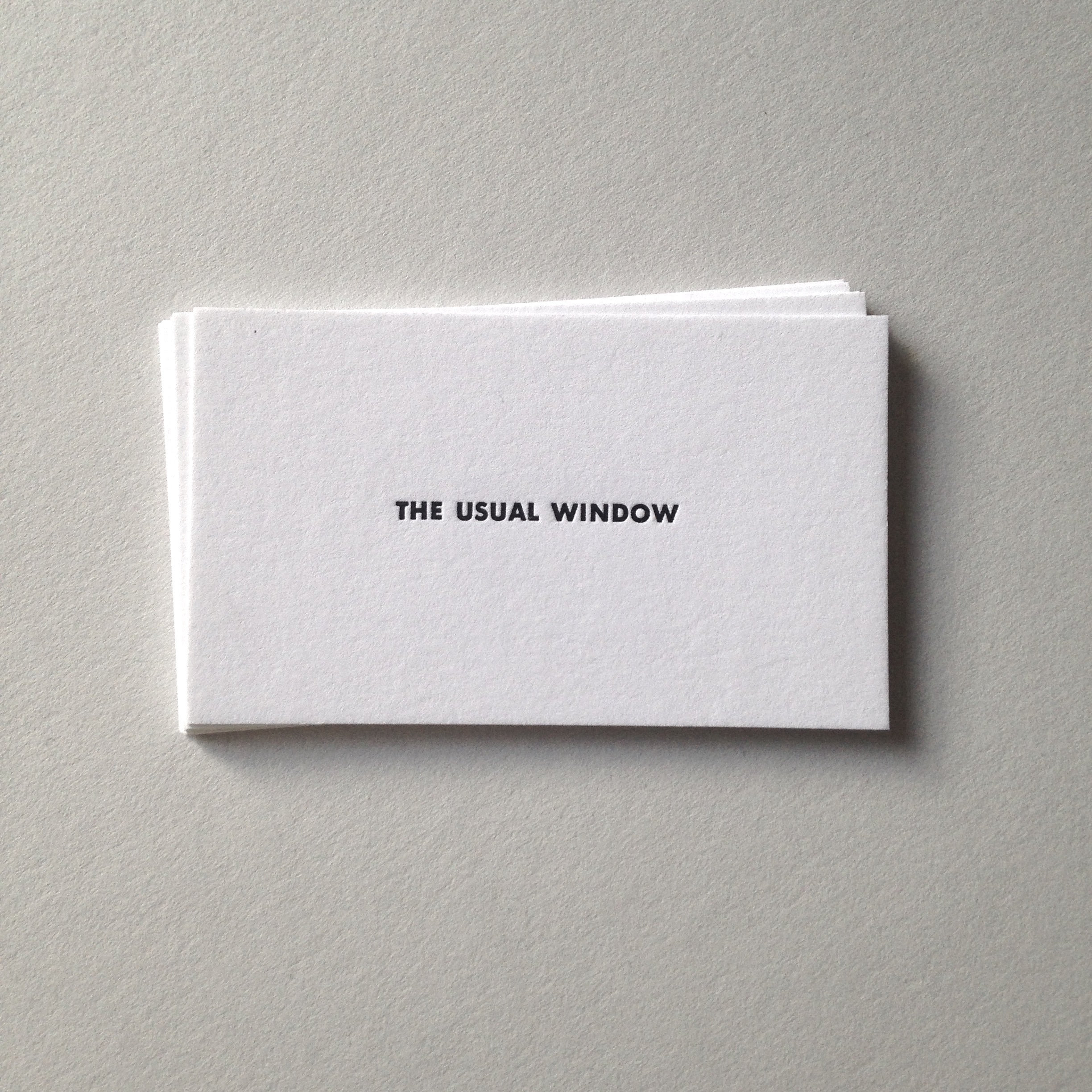
Essay by Kim Selling | Photographs by Lynda Sherman and Sierra Stinson
Beginning this year was a piece of simple distinction, plain text projected over a heavily trafficked corner of a rapidly changing neighborhood. Small collective phrases like singular light bulbs, one alit each night for the birth of 2017. To create something from nothing at the turn of a linear time cycle means that all context from previous cycles have been mined to give this current one a deeper meaning before it has had a chance to play itself out. Lynda Sherman’s The Usual Window uses the peculiarly traumatic experiences of her childhood to create a scene of power dynamics, represented by her chosen avatar, text, in a way that is immediately translatable and digestible for modern viewers. You see the phrase, it is now yours, and will hopefully be used in your own illustrations of self.
These phrases can be read in any way the viewer chooses, but, in any case, are as follows:
MISBEHAVE MASTURBATE RIOT // AND FALL IN LOVE UNAFRAID
KEEP HEAD OUT OF OVEN THUMB OUTSIDE FIST // HEART OUT OF POCKET STITCHED BACK UPON SLEEVE
REQUIRE DESIRE
INCITE DELIGHT
RAGE FORBIDDEN GLEE // AGITATE FEROCIOUS PLEASURE
CRACK SPARKLE PEEL // UNRAVEL ALTER FOMENT
glimmer gleam growl // wage and devour
And the 8th day “bonus track,” DEFLOWER THE PATRIARCHY
As a child in Bremerton, Sherman grew up in a classic prairie rambler with her family. Her bedroom window, the usual window of this show, was pink, framed by pink checked curtains and a white vinyl shade, and distinct not only in its Pleasantville-like appearance, but in its openness to the outside world. One of her neighbors, a non-descript bus driver, would take it upon himself to look through this window often, peeping at Lynda in this room and others throughout her house. She never told her parents, instead internalizing these trespasses as a child, and informing her later experiences regarding safety and consent with these early incidents of voyeurism.
Starting as a literal experience and slowly morphing into an extended metaphor, the “usual window” continues to serve as a direct illustration of Sherman’s treatment of her own body and mind as dual and separate entities. When pressed on her attitude towards herself, Sherman responded: “A lot of artists think about ‘the voyeur’ and that’s something that makes me very uncomfortable, to be seen physically. And I’m not sure if it’s because of that, but I exist mostly in my head and not my body because I don’t want to be just seen as that, and that’s the thing I can control more, is my mind. And that’s mine, that can’t be taken from me by anyone trying to insert themselves into my life or into my mind.”
Infiltration by outside actors is impossible when you’ve proved yourself capable of both severing and filling the spaces between your body and your mind. Sherman mentioned her ability to dissociate often without even realizing, operating both within and outside of herself as she goes along. She remarked on the confluence between the two states within the act of printing: “Even though you’re tuned in [to the printing process], you’re still hyper aware, and I guess that’s the only way I’m aware of my body — is when I don’t wanna have it chopped in the machine. That’s how I know where my hands are.”
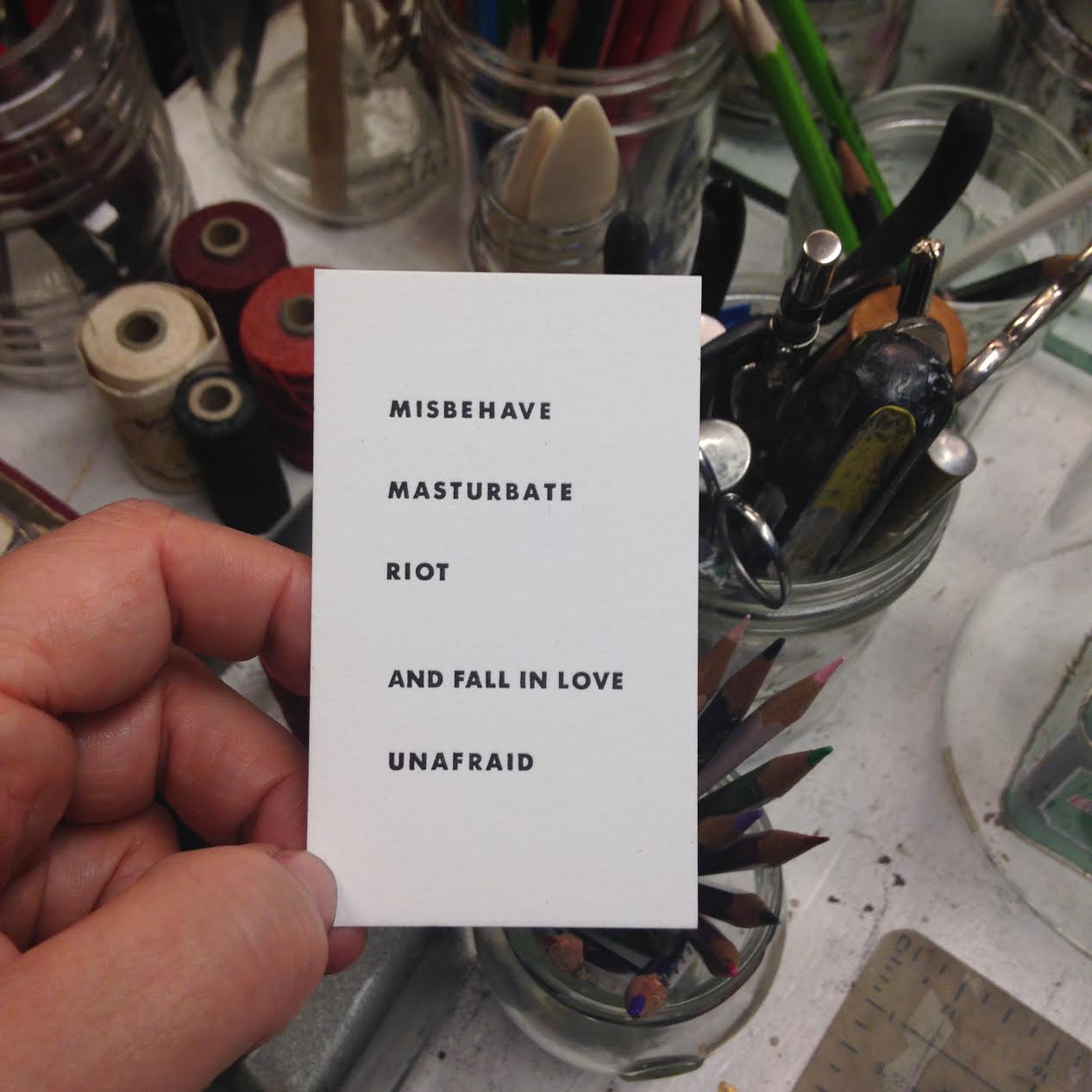
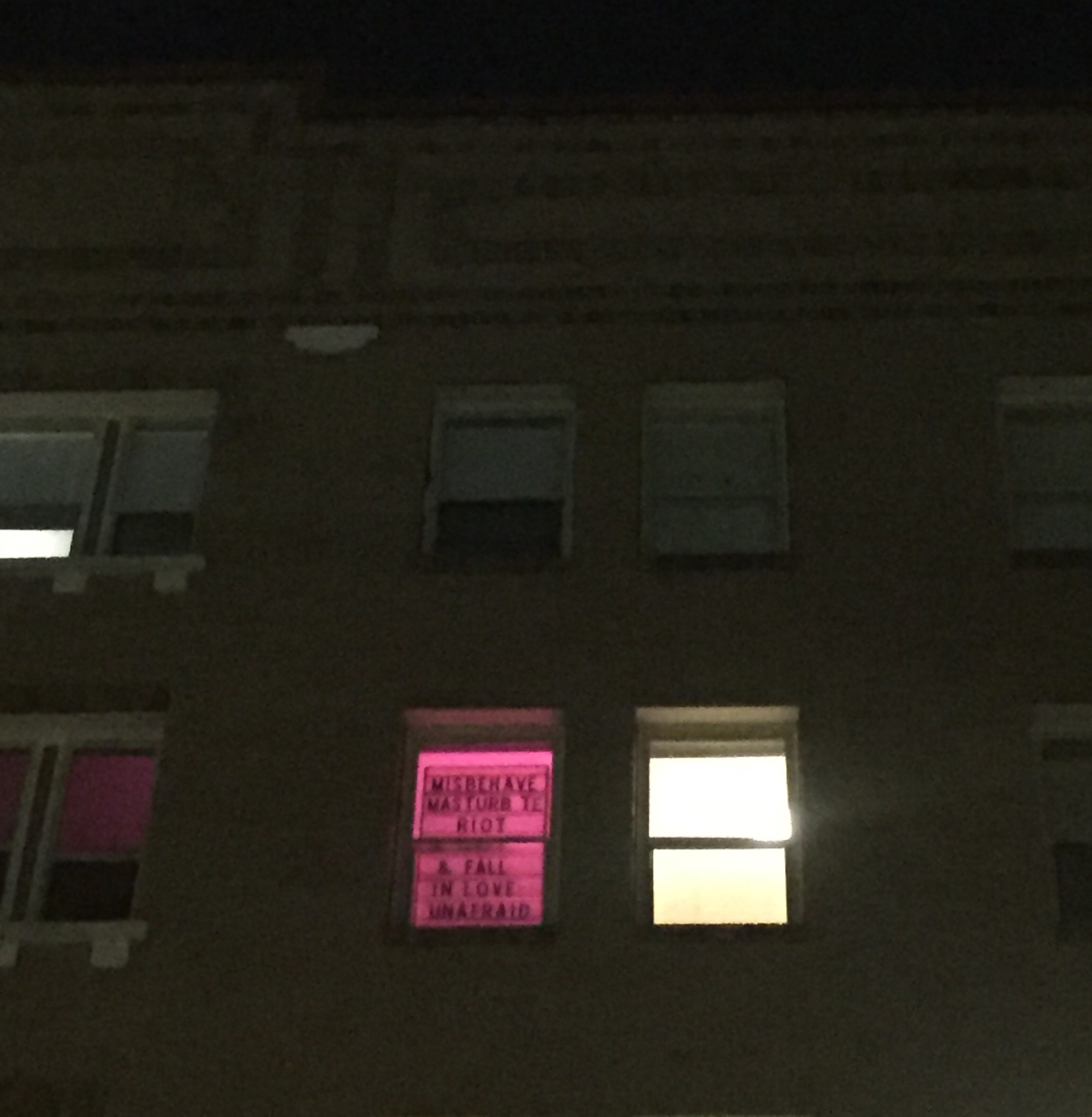
This ability to give and receive your own sentience makes for compelling dictations on action. The statements put forth by The Usual Window play with directness, with providing a to-do list of constant vigilance in how you care for yourself. And Sherman separating her selves allows for her to direct her body and her mind in different but dovetailing causes. In discussing action, Sherman said: “Most of the things I print are like daily meditations, and it does start with me. It is a mental health plan.” Using these disembodied statements work chiefly as a to-do list for both the artist and the audience, clearly outlined for each desired action, to be interpreted differently by each viewer depending on their own mental and physical duplicity. “I think it’s a mental health plan, because otherwise the words just spin in my head. It’s like an energy that you can then release.”
That energy can’t exist in a vacuum; it exists within the realm of Sherman’s larger understanding of her own capacity to effect change. This faceless, body-less narrator can usher art consumers into a new understanding of themselves by virtue of its mutable and truncated message format. She claimed: “A lot of people don’t wanna have to participate in their own understanding but those that do, it could be another portal to use something differently or use something more in depth. Even though there’s so few words I think that each one of those words is its own portal that you can go into. I know that there’s some people in my own life who have such a resistance to that, they don’t even wanna go in those portals.”
Sherman’s deep-seated connection to these portals, each word she used in the show serving as their own vehicle, is more than just message-related. In response to a question about action in creative communities, she mentioned that “I see much more participation and less consumption now, sometimes literally. And I think that’s an important move, to take your own narrative back. And to see people taking their own narrative back through sadness and anger and action, also seeing people realize that it’s not an energy that dissipates into nothing.”
Choosing to take back your own narrative in these trying times (read: really all time, not just this one) involves plunging yourself into the portals of Sherman’s words, which in itself is an almost divine action of shooting for your highest potential as human. So utilizing Sherman’s statements for pointed improvement and increased agency brings us to this central question: can you truly divorce your self? Can mind and body exist separately outside each other? And is this possible without trauma being the vehicle for separation?
Trauma forces us into a compacted uniqueness. We must compartmentalize to remain above what pains us: what to keep and what to throw away, what defines us and what creates a version of us we’d rather not know. In an interpretation of a Usual Window phrase: wage war on your character, and devour what is lacking. Is such divisibility of spirit possible without the definitions of trauma? Without the trappings of guilt or overcorrection, could you ever simply be just a girl at the window?
Of course, the answer is a singular moment only to fit a framework; what matters is the process of separation, realizing one’s agency in solitude, and deciding upon a course to follow, now free (or lonely) of one’s self. Once the body is no longer there, the mind can communicate without boundaries or limitations. The weightlessness of a mind freed from its physical constraints, now able to act or project in any desired way, say, to masturbate-riot as loudly and frequently as possible. Since a freed mind can’t corporeally do that on its own, it can, at the very least, compel everyone else to in its place. So it is, in its way, a figure of universal nature, joining together all of its audience, each of whom have decided to look through the window.

Not to drag this into a Hot Topic echo chamber of neopagan trutherism from which we can never recoil, but this current time of year (typically March 20-April 1) was previously celebrated as the beginning of the new year — a separation of seasons at the vernal equinox allows the world to be born anew for the next cycle of time. This phase of year that we’re in lends itself to separation of the selves — a lifting of the metaphysical veil between soul and body — and re-commitment to physical and emotional goals.
Lynda’s piece was presented at the beginning of the Roman Calendar new year, the beginning of January, so this connection is not totally out of nowhere. A traditionally pagan tradition of this time of year was to write your intentions upon an egg, visually setting your hopes for this new year onto a symbol of impending creation and thusly, subsequent delivery. You bury the egg, and then plant seeds of your choice into the plot of dirt where the egg is buried. The seeds then suck the nutrients out of the egg as they grow into the plant they are meant to be, thereby expanding your hopeful intentions and becoming a tangible representation of how you, yourself, hope to grow.
Each day of The Usual Window, Lynda wrote her intentions on these windows, soon to become actions of hers and of ours. We must promise to and go forward with misbehaving, masturbating, and rioting, inciting delight, requiring desire, and actively deflowering the patriarchy. This is our to-do list now, the explicit actions that will spell out our future.
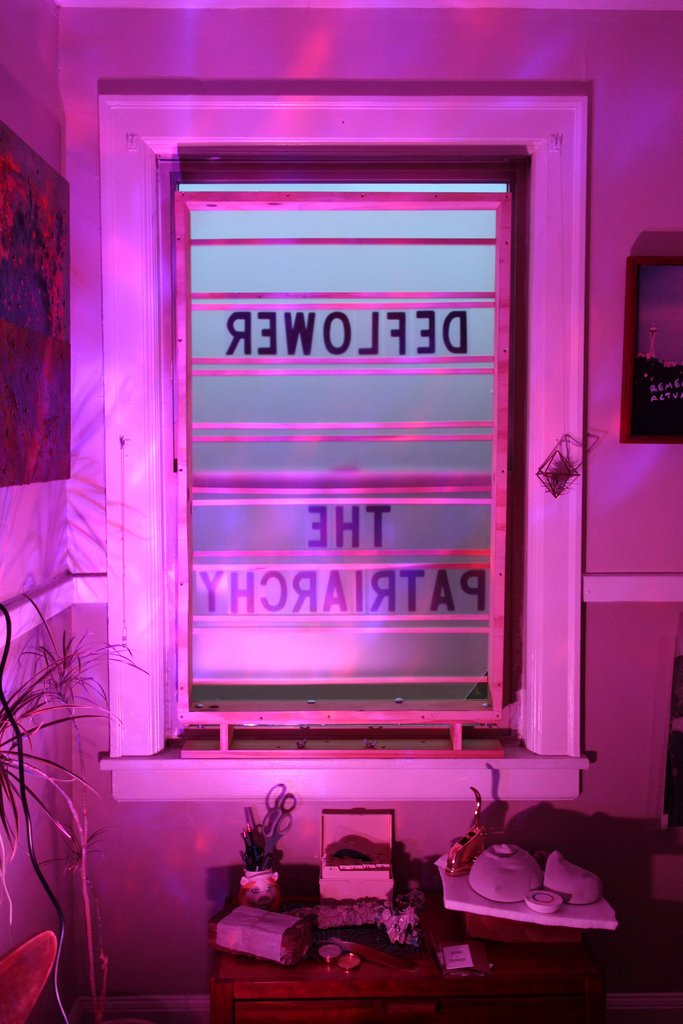
Back to Articles
